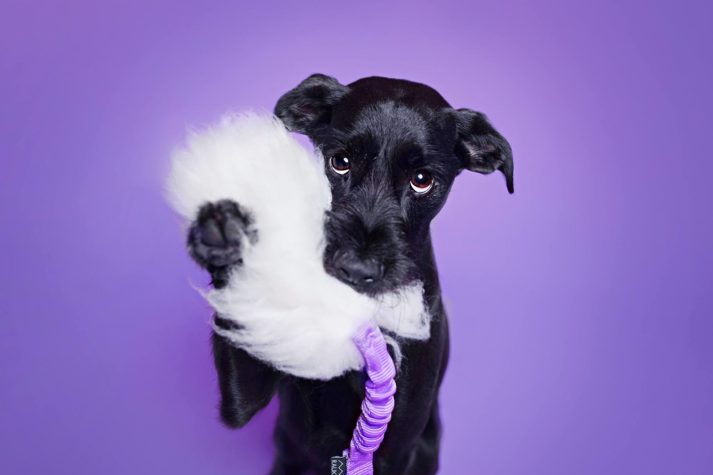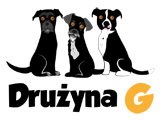
This is the second part of this article. Okay so we already know antecedent arrangement is something to look into when we talk about problem behaviors. But does it relate to sports training? Or any dog training at all?
To sum it up, I would say your success depends on how you setup the training session. And this means a lot of antecedent arrangement. I will cite some paragraphs from my article about shaping cues, but it will be best if you also read it as an addition to this article.
The way we structure our session depends on many variables, (this is a part of the article I wrote for retrieve class):
- history of learning of the dog you are working with
- Gapcio for example needs more dynamic session, no sitting, his grab and hold behavior was first taught as a tug behavior, from which we have shaped hold.
I need to do dumbbell work at the beginning of the session, when he has more strength, more energy. It is because at the beginning of our training journey I was a poor handler, listened to various trainers, some of them told me to use a lot of “impulse control”, “no reward markers” and poorly executed but still “time outs”. The result was Gapcio sitting still, not offering any behavior. So after all those years of changing our work, introducing choice concept, I had to change antecedent picture for this behavior completely.
– not a stationary, so it doesn’t bring old “poisoned” cues. Promote movement.
– different handler position: I was sitting with my legs crossed, not standing in front of Gapcio
– first build tug, then duration of hold - Gacek is a different story. Completely different. He had no history of retrieve. We had a clean slate BUT he has a long history of frustration behaviors, emerging from my sloppy training. A second too long duration criteria and he barks, scratches, whines, offers hundreds behaviors. With him I wanted a completely different antecedent picture.
– start in the middle of the session, after dynamic exercise
– promote stationary form, sit in front of me, BUT do a “sandwich style” session (thank you Hannah Brannigan for this awesome term). So few reps of targeted behavior, followed by play, easy behavior.
– be very clean about criteria (in the 5th lecture this week, you will see a session where I deliberately waited too long or was sloppy with my mechanics), increase slowly
– work on duration first before adding any complex movements
– start in my sit position, but on the stool. Avoid siting on the floor in the first stages (it brings old cue for many previously taught behaviors)
- Physical aspects of your dog.
– Gacek cannot lift his head up, if I had set up session with DB like this I would probably failed because he wouldn’t be able to do it
– Gapcio has a crooked trachea… yes seriously. We noticed that when we were doing regular X-Rays, to make sure his is okay to continue training. It turned out that orthopedically he very much is, but his trachea is like a crooked like a snake… which would perfectly explain why he was not able to do many reps in a row of lifting objects, because treats were literally falling from his mouth. We had to add another behavior in between, so that he had time to properly swallow the treat. - History of behaviors with a certain object.
– this one could be under the first dot category, but I want to emphasize on an object part here.
– if your dog has a history of different behaviors with an object you need for retrieve, don’t use it to teach it. We can incorporate it alongside the process, but not at the beginning stage of learning.
– if you want to use toy, remember that often dogs are encouraged to change grip, paw or nibble the toy. Those are behaviors you want to avoid while teaching retrieve.
Those are examples related to one particular exercise but you can fill in the gaps with any other behavior you teach. I was recently working on side targeting. I had issues with unwanted behavior, he was offering other previously reinforced behaviors related to the platform I was using. I changed the platform to another one, with no such history. All the unwanted behaviors disappeared. No need for extinction, no need for punishment. Just good planning and antecedent arrangement

When you plan your session you need to consider few things which may influence your session.
Those two are not functional terms, but structural ones, and because of that they are not tied to a specific principles of behavior. Structural term is based on assumptions, so we need to always take that into considerations:
- Setting event: stimulus events or contexts, also complex antecedents events that have general control over antecedent-behavior interactions. They may precede and/or overlap with discrete antecedent-behavior relationships. In other words, all those things that happened before your training session, that have no direct relationship with what you do.
- For example, while you were walking into training venue another dog lunged on yours, then there was a loud noise in the area when you placed your training bag, and your dog is startled by noises and in the morning he had is visit at the vet and the procedure was aversive. You start your training session, and your dog is slower, latency increases.
- Ecological variables: non-discrete stimuli which overlap with discrete antecedent-behavior relationships. Also known as contextual variables.
- For example: in your training session there is usually another dog present, but this time you there are five more. Or usually you do a training session late evening but today you took your dog for work at 6AM. You see that his latency increases, that maybe he is showing displacement behaviors.

One more procedure that is often used in computer games, and that is very useful is high-p procedure, based on behavioral momentum.
If you ever played any computer games, you know how they let you do few easy task at the beginning and then as for something more harder? Or even when we play with kids we usually want them to be successful at the beginning (well all the time, but even more important at the beginning) and then ask for more challenging task?
There is a scientific term for that!
Behavioral Momentum: was a metaphor created by John Anthony Nevin. It refers to the tendency of behavior patterns to persists once established. We can draw a parallel between behavior and physical science. Physical momentum is tendency for an object in motion to continue at same velocity unless opposed by a physical force.
So we can say that our momentum is resistance to extinction. In the research done by Nevin et al. 1990 it turned out that food delivery was the most important component of resistance.
In training (and computer games) we use that a lot! If not it is worth looking into since it is a helpful antecedent procedure!
It is called high-p request sequence. So it is not exactly correct to say we use behavioral momentum, we use procedure based on behavioral momentum, not the metaphor itself.
But lets leave the names. And go into details:
High-P Request Sequence is a procedure in which trainer presents a series of easy-to-follow request (high probability) which with the dog (human, cat) has a history of reinforcement and compliance in a sequence, and then finishes with target request (low probability).
This is a great way to get that “flow” in session we do a two to five easy tasks (maybe spins or hand touches) and follow it with more challenging behavior (maybe retrieve or setup in heel). Each easy task is reinforced. This could be great option to plan those more difficult, more demanding behaviors into the session. There is a much greater chance to get that behavior after it follows easy, reinforced behaviors, than if you do a sequence of only difficult tasks. Keep that in mind when you plan your training session.
As you see antecedent arrangements are a broad topic, topic that is integral part of every training session, no matter if you focus on problem behavior or sports training.
